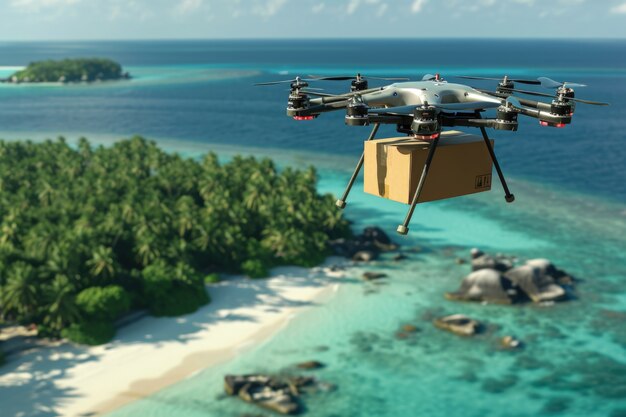
Sponsored article
In recent years, the technological evolution of Unmanned Aerial Vehicles (UAVs) has opened new horizons in remote monitoring and data collection, transforming traditional practices across various sectors. With significant advancements in drone capabilities, industries can now access more accurate and timely information, leading to enhanced decision-making and operational efficiency. This article explores the profound impact of these technologies and the exciting possibilities they usher in for the future.
The impact of UAVs on remote monitoring is nothing short of transformative. Thanks to advanced drone technology, industries are now leveraging real-time data delivery, significantly improving the accuracy of their operations while reducing overall costs. One sector reaping these benefits is agriculture, where drone technology aids in precise crop monitoring and management. The construction industry also benefits, utilizing UAV impact to conduct site surveys and inspections more efficiently than traditional methods would allow. Environmental monitoring has become more reliable with the introduction of versatile long-range UAV drones, which provide extensive area coverage and detailed data collection. These drones, such as the versatile long-range UAV drones, offer the following advantages:
As a result, the landscape of remote monitoring continues to evolve, powered by the capabilities of these remarkable UAV technologies.
The realm of drone innovation is rapidly evolving, showcasing remarkable UAV advancements that are transforming remote monitoring and data collection. With the integration of enhanced sensors, drones now capture ultra-high-resolution images and multispectral data, allowing for in-depth aerial data collection across various industries. Among the most significant technological strides are improvements in battery life, enabling longer flight times and, consequently, more extensive survey areas, which is critical for comprehensive data analysis. Moreover, the advancement in onboard data processing capabilities is streamlining the way we harness information captured from the skies. These cutting-edge technologies facilitate unparalleled insights and precision for researchers, environmentalists, and businesses alike. Key benefits of these UAV advancements include:
By leveraging these advances, UAVs are becoming indispensable tools in executing detailed and accurate aerial data collection missions, proving essential for decision-making and strategic planning in myriad applications ranging from agriculture to infrastructure management.
Incorporating UAV technologies into existing systems presents a myriad of challenges, often centering around drone regulations, privacy concerns, and technical limitations. One of the significant UAV challenges is navigating complex regulatory environments, where differing rules across regions can hinder seamless integration. Privacy concerns are also paramount, as UAVs can inadvertently capture sensitive data, leading to potential trust issues among the public. Additionally, technical limitations such as limited battery life, range restrictions, and data processing capabilities must be addressed for efficient UAV deployment. Integration solutions require a multifaceted approach: harmonizing global regulations to ensure consistent drone usage, implementing robust encryption methods to safeguard privacy, and investing in technological advancements to enhance UAV endurance and data processing. Future trends suggest that as technologies evolve, emerging solutions like AI-driven data analytics and more efficient power sources will further mitigate these barriers, enabling more widespread adoption of UAVs in remote monitoring and data collection.